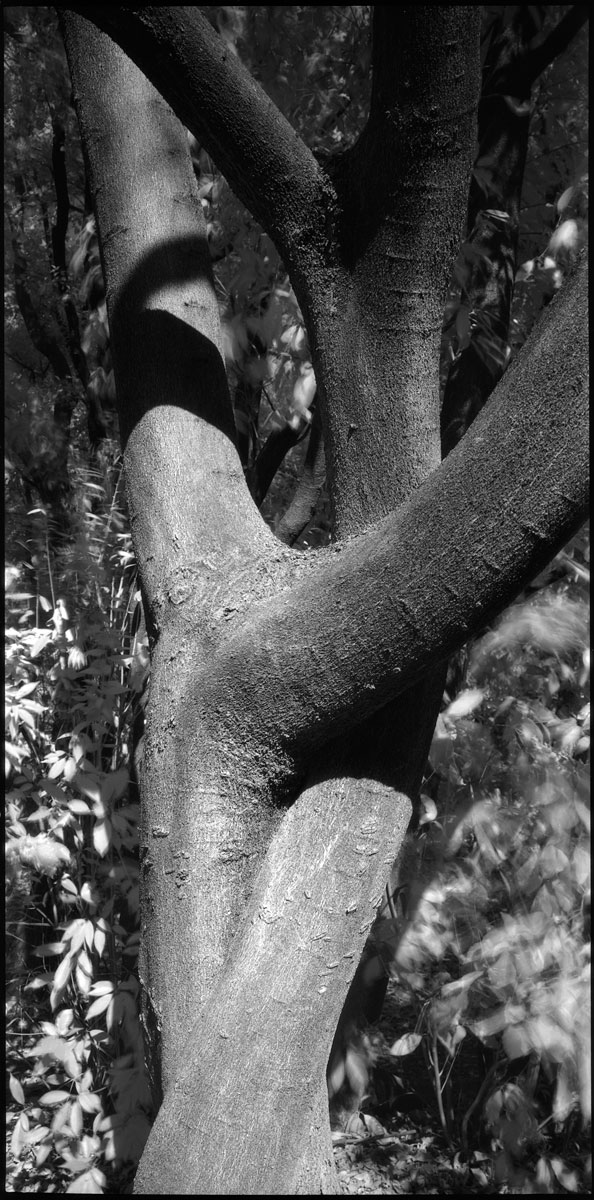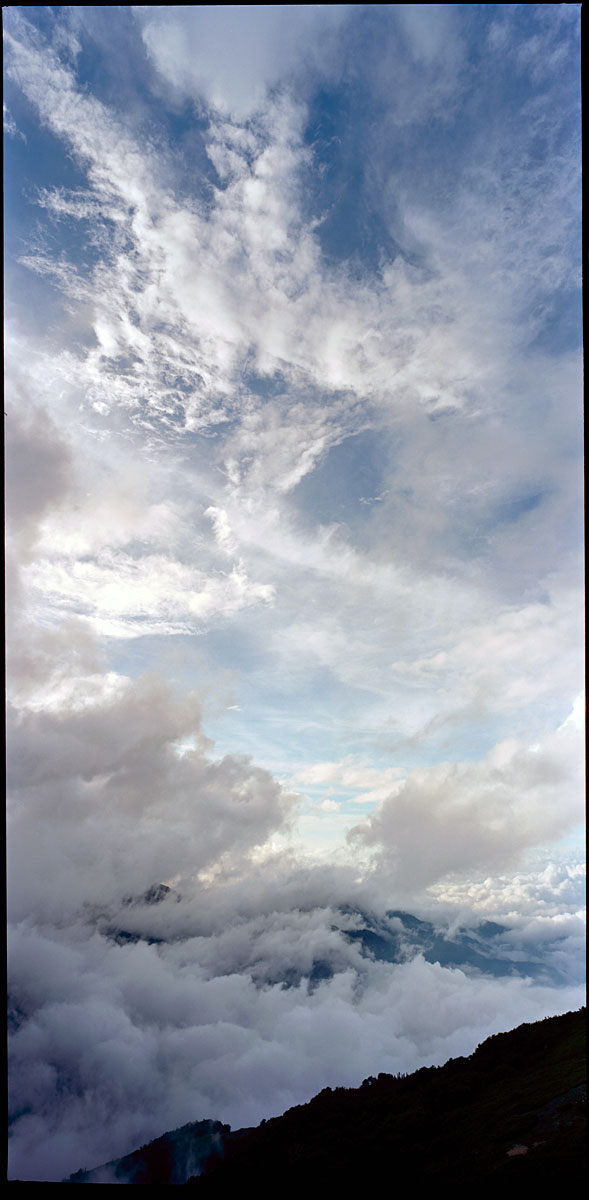Category Archives: Japanese Nature
Hase-dera
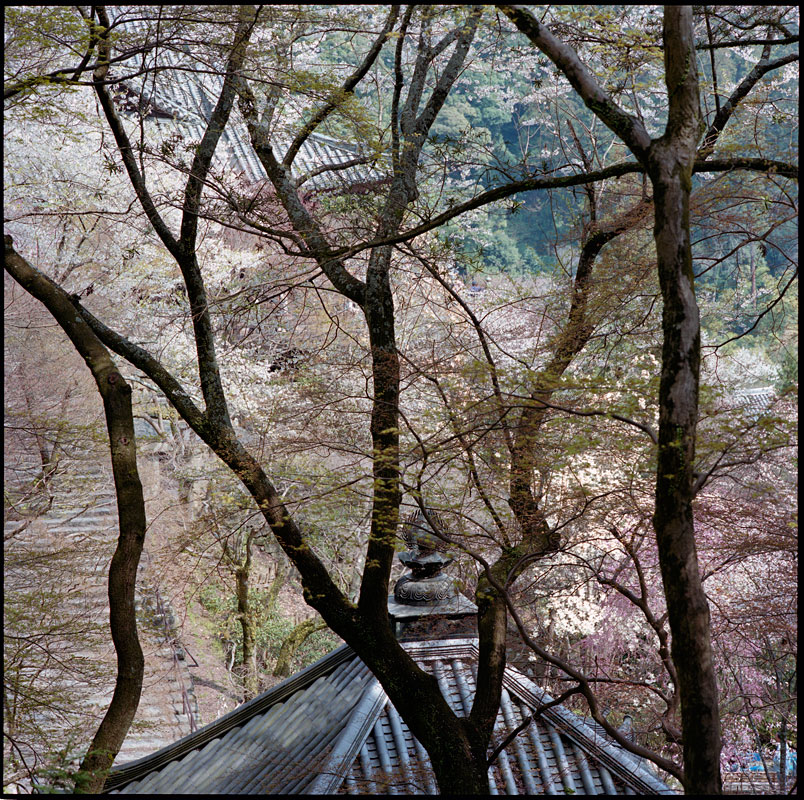 Tucked in along the walls of a valley just south of Nara is the Buddhist temple Hase-dera. The Japanese visit in the spring to see the cherry, plum, and magnolia in blossom. The compound is huge with over thirty buildings. Long flights of stone steps help you traverse the topography. Despite the size, Hase-dera has cultivated a landscape where it is difficult to separate the artificial from the natural. Click on the image for a larger view.
Tucked in along the walls of a valley just south of Nara is the Buddhist temple Hase-dera. The Japanese visit in the spring to see the cherry, plum, and magnolia in blossom. The compound is huge with over thirty buildings. Long flights of stone steps help you traverse the topography. Despite the size, Hase-dera has cultivated a landscape where it is difficult to separate the artificial from the natural. Click on the image for a larger view.
Sakura, Sakura
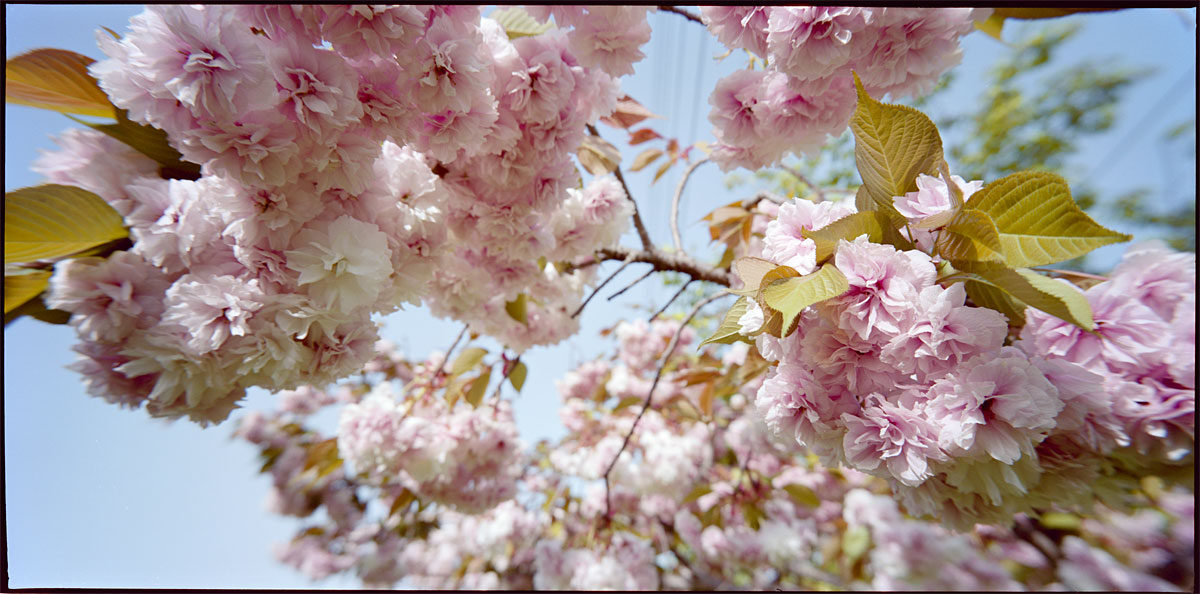 It is cherry blossom season in Japan. These flowers are in Daisen Park in Sakai. This park is also known for its necropolis. Click on the image for a larger view.
It is cherry blossom season in Japan. These flowers are in Daisen Park in Sakai. This park is also known for its necropolis. Click on the image for a larger view.
Where Gods Dwell
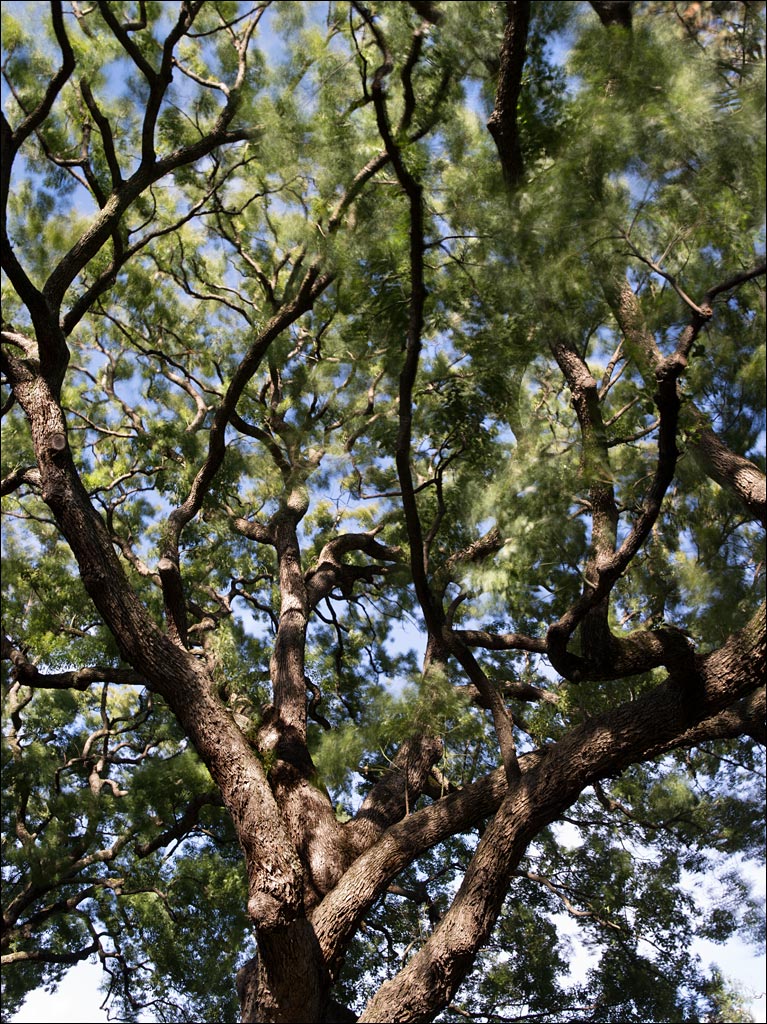 If anyone has seen the work of the director Hayeo Miyazaki, a common motif may strike you: trees. In the movies Castle in the Sky, My Neighbor Totoro, and Princes Mononoke, powerful, towering arboreal characters appear. The early Japanese believed trees, particularly evergreen trees, were dwellings for deities from heaven. With roots firmly in the earth and branches reaching into the sky, living off the wind and sun, and lifespans greater than any human, how could these beings be anything but divine. The Indian poet Rabindranath Tagore said, “trees are the Earth’s endless effort to speak to the listening heaven.” Click on the image for a larger view.
If anyone has seen the work of the director Hayeo Miyazaki, a common motif may strike you: trees. In the movies Castle in the Sky, My Neighbor Totoro, and Princes Mononoke, powerful, towering arboreal characters appear. The early Japanese believed trees, particularly evergreen trees, were dwellings for deities from heaven. With roots firmly in the earth and branches reaching into the sky, living off the wind and sun, and lifespans greater than any human, how could these beings be anything but divine. The Indian poet Rabindranath Tagore said, “trees are the Earth’s endless effort to speak to the listening heaven.” Click on the image for a larger view.
Kamikochi and Yari-ga-take
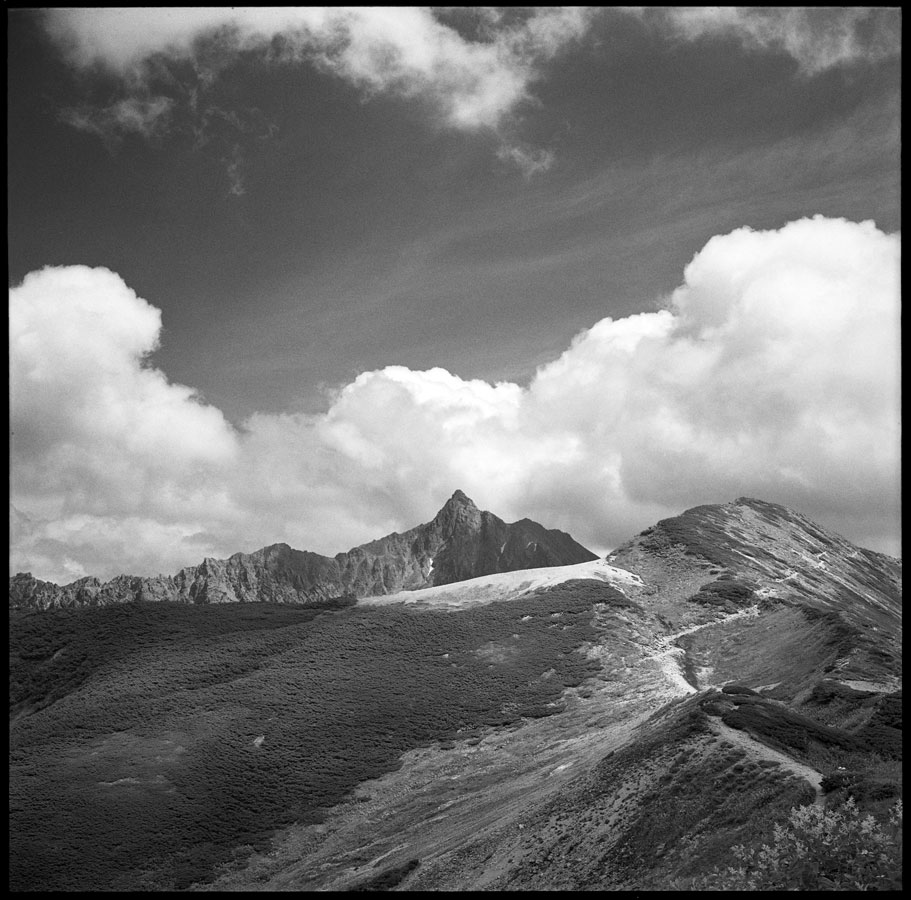 One of the most popular climbing destinations in Kamikochi is the arrow-shaped peak of Yari-ga-take (3,180m/10,430ft.). And it is popular. You will most likely have to stand in line during the morning rush hour while climbers ascend to the summit—there are two routes, one to go up and another to go down.
One of the most popular climbing destinations in Kamikochi is the arrow-shaped peak of Yari-ga-take (3,180m/10,430ft.). And it is popular. You will most likely have to stand in line during the morning rush hour while climbers ascend to the summit—there are two routes, one to go up and another to go down.
The first known ascent of Yari-ga-take was by the Buddhist monk Banryu in 1826. The English missionary Walter Weston would scale this mountain 66 years later. While Banryu installed three Buddhist statues, today the summit has a Shinto shrine. The cave Banryu was said to have used for his attempt is still on the trail a few hundred meters below the ridge.
This image was taken from the trail to Momisawa-dake (2755m/9,040ft.) north of Kamikochi. This is a gentler, more secluded section of the alps. Click on the image for a larger view.
Kamikochi and Daikiretto
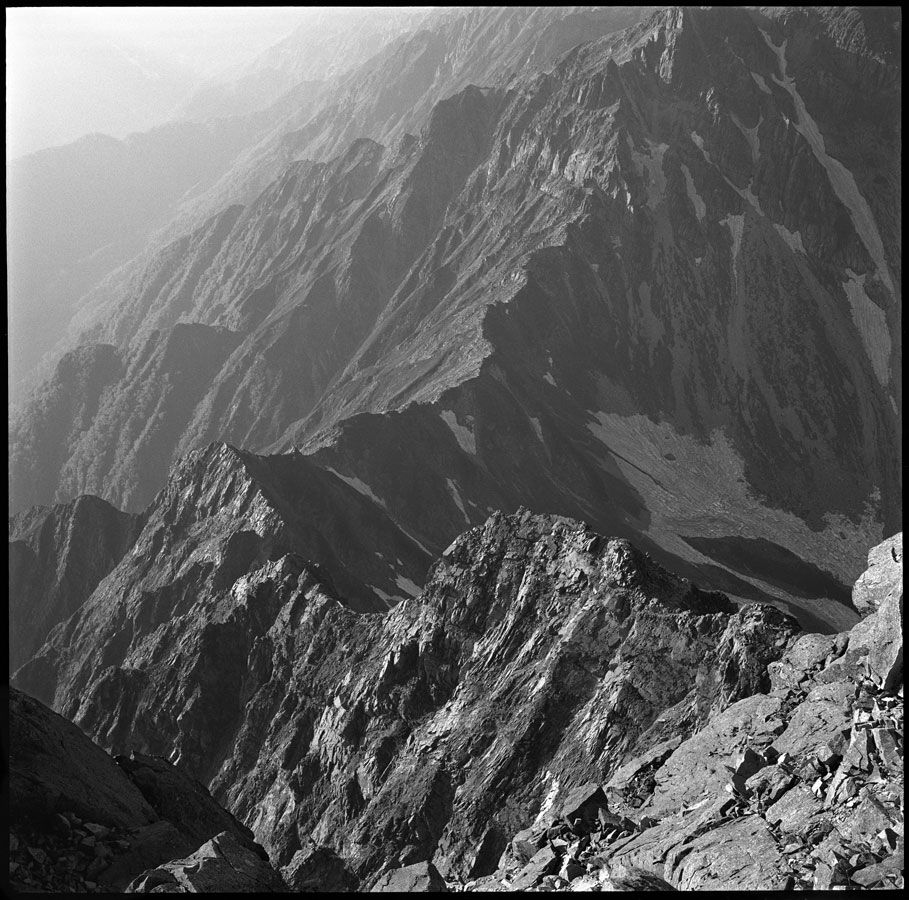 The main ridge of the peaks in Kamikochi is a spectacular alpine zone. Daikiretto (大切戸), the Big Gap, is a one kilometer or two-thirds of a mile section that has numerous vertical pitches of rock with chains and ladders to aid climbers. The estimated time to traverse this for an experienced climber is about three and a half hours. This is the view from Kita Hodaka-dake (3,106m/10,190ft.). Click on the image for a larger view.
The main ridge of the peaks in Kamikochi is a spectacular alpine zone. Daikiretto (大切戸), the Big Gap, is a one kilometer or two-thirds of a mile section that has numerous vertical pitches of rock with chains and ladders to aid climbers. The estimated time to traverse this for an experienced climber is about three and a half hours. This is the view from Kita Hodaka-dake (3,106m/10,190ft.). Click on the image for a larger view.
Kamikochi and Yoko Valley
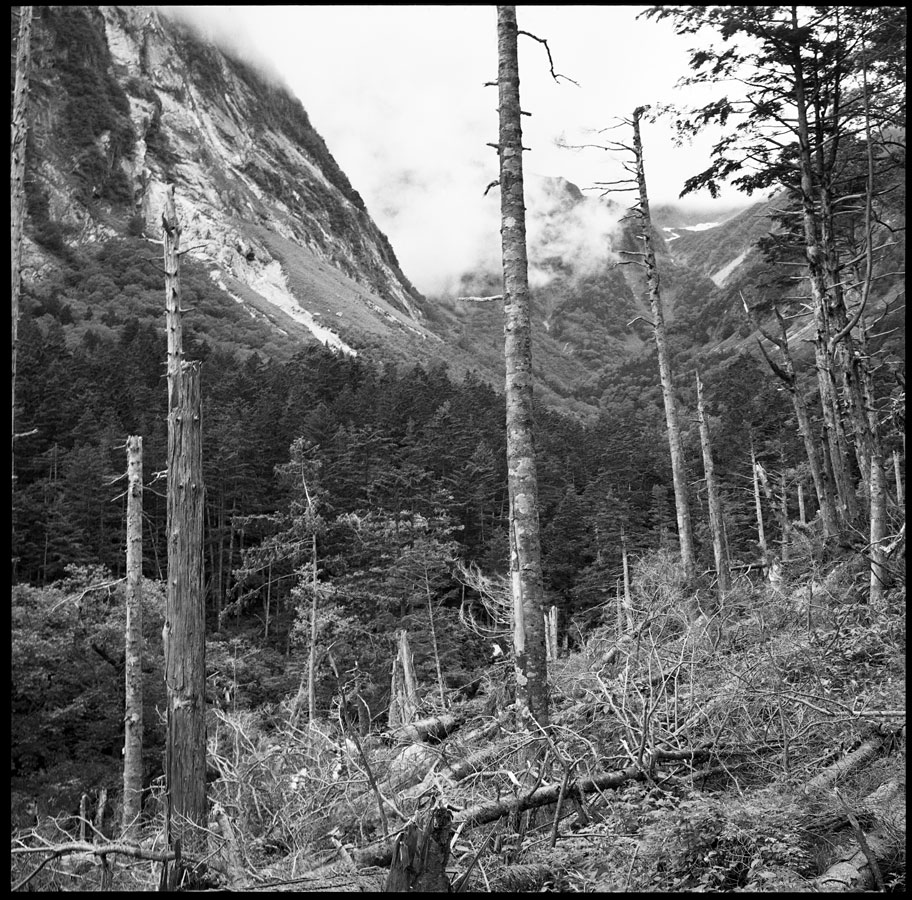 The summer climbing season, coming between rainy season in June and typhoon season in August, is a short one. It is said the last ten days in July present the most stable weather. Even in the best of weather, you can be almost guaranteed a shower in the mountains in the middle of the day, even if the rest of the country is seeing blue skies and sunshine.
The summer climbing season, coming between rainy season in June and typhoon season in August, is a short one. It is said the last ten days in July present the most stable weather. Even in the best of weather, you can be almost guaranteed a shower in the mountains in the middle of the day, even if the rest of the country is seeing blue skies and sunshine.
One of the most popular routes to the summit of Okuhodaka-dake is through Yoko valley. With a wet, temperate climate, the tree line in the Japanese Alps is around 2,500m/8,200ft. Click on the image for a larger view.
Kamikochi and Azusa Valley
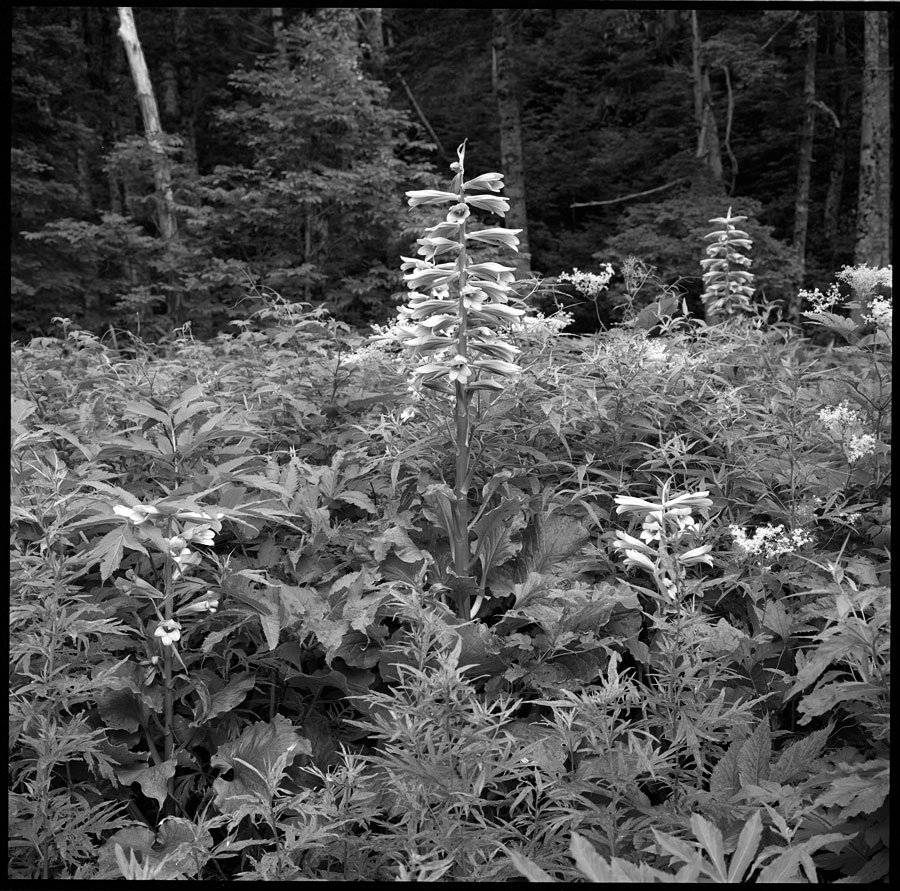 The Azusa Valley runs the length of Kamikochi. Despite the 1,500m/5,000ft elevation of the valley floor, mild summer temperatures and abundant rain create a rich ecosystem. The Japanese Cardiocrinum lily, Cardiocrinum cordatum var.glehnii, is an impressive sight. Click on the image for a larger view.
The Azusa Valley runs the length of Kamikochi. Despite the 1,500m/5,000ft elevation of the valley floor, mild summer temperatures and abundant rain create a rich ecosystem. The Japanese Cardiocrinum lily, Cardiocrinum cordatum var.glehnii, is an impressive sight. Click on the image for a larger view.
In the early twentieth century, the valley was under threat from cattle pasturing in the summer. With the release of the highly successful novel Kappa by Ryunosuke Akutagawa, wherein the eponymous creatures where said to dwell in Kamikochi, and a visit by an imperial prince in 1927, the influx of tourists exploded. Ten years later, area was was given permanent protection in the formation of the Chubusangaku National Park.
Kamikochi and the Japanese Alps
 Kamikochi is located in the North Japanese Alps. This is the home of Japanese alpinism, a sport introduced to Japan at the end of the nineteenth century by the British missionary Walter Weston. Since then, the Japanese have organized their mountains with thousands of trails and an extensive mountain-hut system. Even the Imperial Hotel has a branch in the valley of Kamikochi (the bottom of the third frame from the right). Before the tourists and climbers, mountains were climbed for religious practice. You will find shrines at the top of many of the peaks.
Kamikochi is located in the North Japanese Alps. This is the home of Japanese alpinism, a sport introduced to Japan at the end of the nineteenth century by the British missionary Walter Weston. Since then, the Japanese have organized their mountains with thousands of trails and an extensive mountain-hut system. Even the Imperial Hotel has a branch in the valley of Kamikochi (the bottom of the third frame from the right). Before the tourists and climbers, mountains were climbed for religious practice. You will find shrines at the top of many of the peaks.
Kamikochi is home to Japan’s third tallest peak Okuhodaka-dake (3,190m/10,470ft.), which can be seen on the right of the panorama. The active volcano Yake-dake (2,455m/8,050ft) can also be climbed if it is not venting gas—it last erupted in 1962 and can be seen in the third frame from the left. The trail on the ridge between Okuhodaka-dake and Yake-dake is known for being one of the most dangerous, and spectacular, routes in Kamikochi.
These photographs were taken from the lesser climbed peaks of Kasumisawa-dake (2,645m/8,680ft.)—K2, as it is known, is the dark peak on the left, with the peak of Kasumisawa-dake just beyond it; I am standing on K1. To say this place is off the beaten path would be an accurate description. Most of this trail is overgrown and can become very unclear in places. It was one of the most physically demanding day hikes I have ever had in Japan, mostly from the heat and humidity of the brush and the undulating trail, rather than from it being technically challenging. Naomi and I were the only ones on the peak that day; it is rare treat to be alone in Kamikochi. Click on the image for a larger view.

